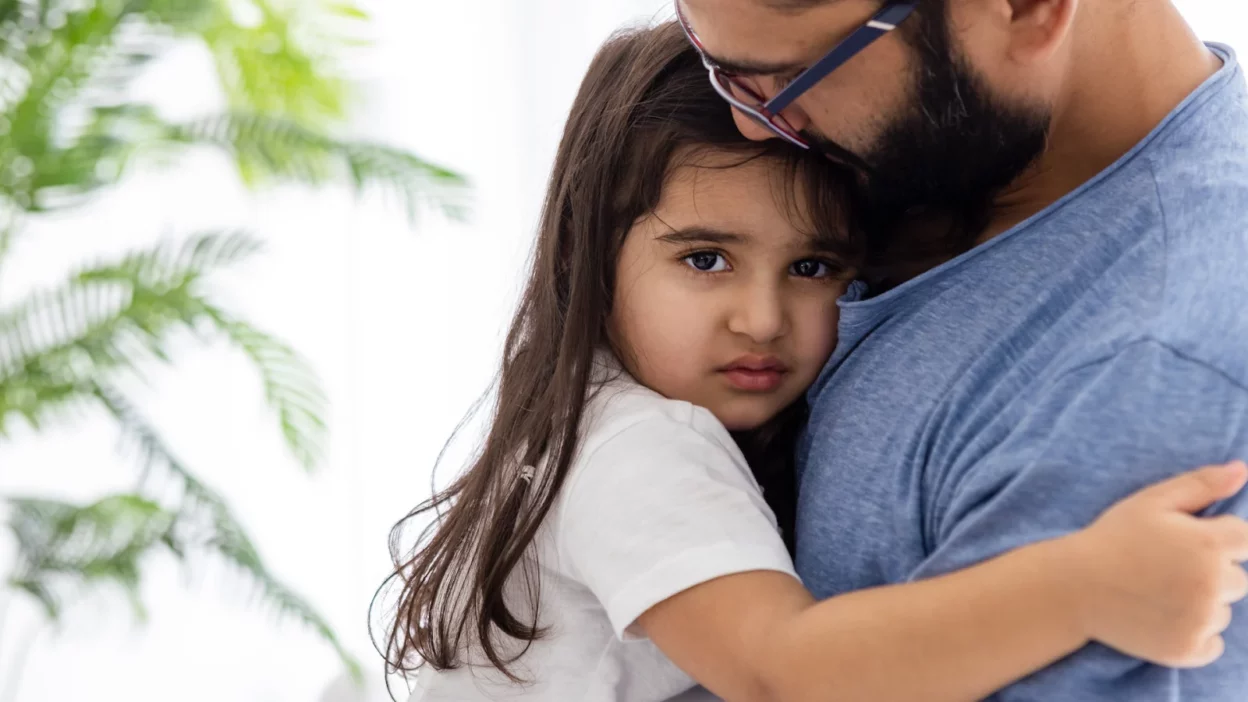Picture this: it’s Monday morning, and your five-year-old is clinging to your leg, tears streaming down their face because they don’t want you to leave for work. Sound familiar? You’re not alone in this struggle. Separation anxiety affects countless families, creating stress for both children and parents. Research shows that separation anxiety typically begins when a child is around 6 to 8 months old and peaks between 12 and 18 months.
Developmentally appropriate separation anxiety manifests between the ages of 6 to 12 months, making it a common and expected part of early childhood. While these episodes can feel overwhelming, there’s hope in establishing consistent daily routines that provide security and predictability for anxious children.
Understanding How Routines Help with Separation Anxiety
When children experience intense distress during separations, parents often feel helpless. However, managing separation anxiety becomes more achievable when families understand how a daily structure can create emotional stability.
The Science Behind Routine and Anxiety
Routines work by creating predictability in a child’s world. When children know what to expect, their nervous system stays calmer. Think of routines as an emotional anchor – they provide stability when everything else feels uncertain. The separation anxiety disorder treatments often incorporate structured daily schedules because consistency helps reduce the unknown factors that trigger anxiety responses.
Children’s brains are wired to seek patterns and predictability. When we establish regular routines, we’re essentially teaching our minds that the world is safe and manageable. This doesn’t happen overnight, but with patience, most children begin to feel more secure within structured environments.
How Predictability Reduces Anxiety Triggers
Acute separation anxiety often stems from uncertainty about what happens next. Will mom come back? When will Dad return? Routines answer these questions before they’re even asked. A well-established routine creates a roadmap that children can follow, reducing the mental energy spent worrying about unknowns.
Creating an Effective Routine for Anxiety Management
Building a routine for anxiety doesn’t require complex planning or expensive tools. It’s about establishing simple, consistent patterns that children can rely on during stressful moments.
Morning Routines That Set the Tone
Start your day the same way every time. Maybe it’s breakfast together, then getting dressed, followed by a special goodbye ritual. The key isn’t what you do – it’s doing the same things in the same order. This predictability helps children prepare mentally for the day ahead.
Consider creating a visual schedule for younger children. Pictures showing each step of the morning routine can help them understand what’s coming next. This visual guide becomes a security blanket they can reference when anxiety starts building.
Evening Routines for Emotional Security
Bedtime routines are particularly crucial for anxious children. The transition from day to night can trigger separation anxiety concerns about being alone. Consistent evening activities like bath time, story reading, and quiet conversation help children wind down while feeling connected to their caregivers.
Don’t underestimate the power of a good bedtime routine. It’s often the last interaction children have before facing the vulnerability of sleep, making it a prime opportunity to reinforce security and love.
Goodbye Rituals That Provide Comfort
Creating special goodbye rituals helps children process separations more easily. This might be a specific hug, a special phrase, or even a small object they can hold while you’re away. These rituals become emotional bridges that connect children to their caregivers even during separations.
Implementing Acute Separation Anxiety Tips
Putting acute separation anxiety tips into practice requires patience and consistency. Remember, change doesn’t happen immediately – it’s a gradual process that builds over time.
Gradual Exposure Through Routine
Start with very short separations and gradually increase the time. If your child struggles with you leaving for work, begin with five-minute trips to the mailbox. Build up slowly, always returning when you say you will. This approach helps children learn that separations are temporary and predictable.
The key is making each separation a positive experience. Don’t sneak away – instead, use your established goodbye ritual and leave confidently. Children pick up on our emotions, so staying calm and positive helps them feel more secure.
Consistency During Transitions
Life changes can disrupt routines, but maintaining some consistent elements helps anxious children cope better. If you’re moving homes or changing schools, keep bedtime routines the same. These familiar patterns provide stability during uncertain times.
When disruptions are unavoidable, prepare children by talking about what will stay the same. Maybe breakfast will still be at the same time, or the bedtime story ritual will continue unchanged. These anchors help children feel secure even when other things are shifting.
Building Independence Through Structure
Anxiety management strategies work best when they gradually build children’s confidence in their ability to handle separations. Routines can include small tasks that children complete independently, showing them they’re capable of managing on their own.
This might be as simple as having children pack their backpacks or choose their clothes for the next day. These small acts of independence, embedded within predictable routines, help build the confidence needed to handle bigger separations.
Long-term Anxiety Management Strategies
Successfully managing separation anxiety requires thinking beyond immediate fixes. Long-term strategies focus on building resilience and coping skills that children can use throughout their lives.
Adapting Routines as Children Grow
What works for a toddler won’t necessarily work for a school-age child. As children develop, their routines should evolve too. The core principle remains the same – predictability and consistency – but the specific activities can change to match their developmental needs.
Older children might benefit from more complex routines that include planning or problem-solving activities. The goal is to maintain structure while allowing for age-appropriate independence and responsibility.
Family Involvement in Routine Building
Everyone in the family plays a role in successful routine implementation. When siblings and caregivers are consistent with routines, children feel more secure. This doesn’t mean everyone has to do everything the same way, but core elements should remain consistent across different caregivers.
Communication between family members about routines helps ensure everyone is on the same page. This consistency across different people and situations reinforces the security that routines provide.
Celebrating Small Victories
Recognize and celebrate when children successfully navigate separations or follow routines independently. These acknowledgments reinforce positive behaviors and build confidence. Remember, progress isn’t always linear – some days will be harder than others, and that’s completely normal.
Common Questions About Managing Separation Anxiety Through Routines
What is the best intervention for separation anxiety?
Cognitive behavioral therapy (CBT) is highly effective for separation anxiety disorder. Exposure treatment, part of CBT, helps children learn to face and manage fears about separation and uncertainty through gradual, structured approaches.
How to help someone with severe separation anxiety?
Helpful strategies include calm breathing exercises, muscle-relaxation techniques, positive thinking, cognitive coping cards, and seeking reassurance from loved ones. Professional guidance may be necessary for severe cases.
How do you manage acute anxiety?
Managing anxiety involves learning about anxiety, practicing mindfulness, using relaxation techniques, correct breathing methods, dietary adjustments, exercise, building self-esteem, cognitive therapy, exposure therapy, and structured problem-solving approaches.
Finding Your Family’s Rhythm
A routine for anxiety management isn’t one-size-fits-all. What works for one family might not work for another, and that’s okay. The important thing is finding consistent patterns that help your child feel secure and supported.
Remember, building effective routines takes time and patience. There will be setbacks and challenging days, but consistency pays off in the long run. Trust the process, stay committed to your established routines, and celebrate the small victories along the way.
The power of routine in managing acute separation anxiety lies not just in the activities themselves, but in the security and predictability they provide. When children know what to expect, they’re better equipped to handle the uncertainties that life brings their way.

Lexy Summer is a talented writer with a deep passion for the art of language and storytelling. With a background in editing and content creation, Lexy has honed her skills in crafting clear, engaging, and grammatically flawless writing.



